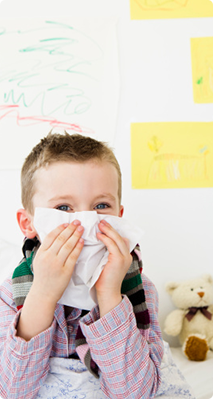No-one likes having a bunged up nose, least of all your little one. Luckily, it’s usually pretty easy to help them breathe more easily (and help you breathe a sigh of relief!)
When your baby has a blocked nose following a few simple tips can give relief.
How do I know if my little one has a blocked nose?
They might be irritable
They might have difficulty breathing
They may have difficulty feeding
How can I help them feel better?
Blocked noses can be caused by a mild infection, like the cold or flu, but it’s worth checking if your child has accidentally blocked a nostril themselves – it happens more often than you might think!
Is there something stuck up their nose?
Have a look and see if there’s something stuck up it.
If so, leave it where it is, as it may get pushed up further if you try to remove it.
Take your child to the nearest A&E department or minor injury unit.
If your child is struggling to breathe with a blocked nose, show them how to breathe through their mouth.
If it’s genuine nasal congestion?
A gentle option is to wash away the mucus that’s causing the blockage, so your child can breathe more easily.
A natural treatment like CALPOL® Soothe & Care Nasal Spray or Saline Drops can help you do this.
It can be tricky treating your child with a nasal spray, especially when they’re small and wriggly! So we’ve written a short guide, below, to help.
Top tips on using a nasal spray
Get the timing right
Timing really is everything! It’s hard to use a nasal spray when your baby’s feeling wriggly, so try dosing them when they are nice and relaxed, like after a bath or a feed.
If your child’s under 2:
Lay your child down and turn their head to one side.
It’s sometimes helpful to lay them on a pillow, so you can tilt their head back slightly, too.
Put the nozzle into a nostril and press the spray head once.
Then repeat in the other nostril.
If they’re over 2:
Put the nozzle into one nostril, holding the bottle vertically.
Press the other nostril closed.
Press the spray head once and spray deeply, asking your child to breathe in at the same time.
Then repeat in the other nostril.
Don’t worry about misfires
If you get a little spray in their eye, don’t panic! It may surprise them a little but saline solution is very gentle and shouldn’t cause any harm.
If you’re finding it tricky to use a nasal spray with a young baby, try using nasal drops instead, as some people find these easier. You could try CALPOL® Soothe & Care Saline Nasal Drops.
Handy tip
Moisture and warmth can help too. Try taking your child into the bathroom while you run a steamy shower or bath.
Some more simple tips
Make sure your little one gets plenty of restful sleep – this will really help give them the strength they need to recover.
If they’re over 1, prop up the head of your child’s bed by placing a couple of books under the mattress below their pillow. It can help your little one breathe more easily while they sleep.
How long will it last?
In most cases, a blocked nose will usually clear within a week or two as the underlying infection (often cold or flu) only lasts a short time.
When to call the doctor
A blocked nose usually just needs a few cuddles and some rest but you should go and see your GP if:
you think your child has something stuck up their nose.
your child has a stuffy nose for a long time, as it might be hayfever or another allergy.
The information on this page is not exhaustive. You know your child best, if you have any concerns about your child, you should contact your GP
See also
Cold or flu?
What’s the difference, and how can you tell which your child has?
Contact the HSE
For health advice and reassurance.
1850 24 1850






